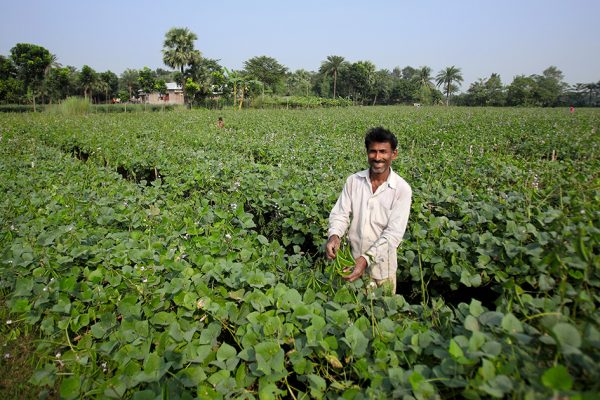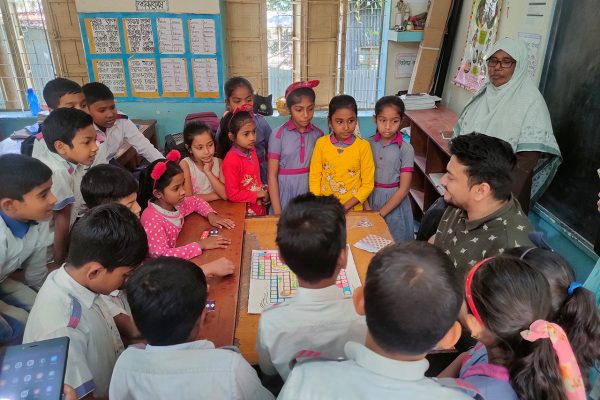Growth at the grassroots: Communities revamping urban slums
Reading Time: 2 minutes
Bangladesh is a country the size of New York but with a population that’s 8.5 times as large – 165 million people live in Bangladesh, compared to New York’s 19 million. 1 in 3 people in the country’s capital, Dhaka, live in urban slums.
While slums offer refuge to people who are excluded from the formal housing system, it also presents a very sordid picture of humanity living in congested spaces with rampant disease and poverty.
Slums are defined as compact clusters of five or more households living in precarious conditions on public or private land, lacking land tenure security. Approximately 13,935 urban slums exist across Bangladesh.

A low-cost housing model built in Jhenaidah. BRAC piloted 30 of these low-cost homes in Khulna and Satkhira in 2018.
Slums are home to economic migrants, unemployed job-seekers, and those straddling the poverty line. The majority of the houses (91%) are made of temporary structures, only half of the population have access to safe water, and a quarter have access to sanitary latrines.
BRAC’s work has made strides in developing infrastructure and improving the wellbeing of people living in urban slums. The impact has been clear – and this is just the beginning of the vision to upgrade informal settlements by 2022.

Here are three major takeaways from our work in upgrading slums.
Impact is the strongest when community takes the lead.
The community is at the core of all development efforts. The locals have much to contribute in the process of transforming their settlements. Women played an active part in mobilising. Community development organisations (CDOs) were formed and mobilised in every slum, in addition to primary groups and cluster committees.
Each slum identified and prioritised its social and infrastructural problems, and came up with solutions. They presented their action plans to their local government authorities for validation with feasible timelines. By being embedded in the development process as participants, problem-solvers, and planners, the community strengthened their ownership and entitlement towards the development of their slums.
Public-private partnerships are key.
Local government authorities from 20 cities and towns participated in pro-poor sensitisation dialogues, workshops, and meetings. Urban slums in these regions are now recognised as important contributors to the growth of the local economy.
The local municipal governments allocated funds from their annual budget towards slum infrastructure development. They also participated in the community mobilisation process by consulting with local community leaders to discuss their needs and demands. The public-private partnership established between the local government, local community, and BRAC can serve as a model for urban development initiatives in cities and towns in other places.

Adapting multiple financing models offer solutions on multiple fronts.
We tested out three different models of financing in the slum upgrading process: cost sharing, cost recovery, and enterprise model. For infrastructural upgrading, we adapted a cost sharing approach whereby the locals, the government, and BRAC respectively contributed funds.
The community fundraised and contributed 10-20% of the total construction costs. The government allocated 20-40% while BRAC contributed the rest. In building low-cost housing, we implemented a cost recovery approach by giving our clients small grants which they repay as a fixed amount to a revolving fund, managed by the community. With the enterprise model, we provided livelihood grants and opportunities to people to start their own small-scale businesses.
BRAC is not only empowering communities to take ownership and responsibility of their improved living conditions, they are also setting an example of sustainable urban development for other communities in the Global South to adapt.
Hasina Mushrofa is the programme head of BRAC’s urban development programme. Mahira Khan is a knowledge management and communications manager for the programme.





